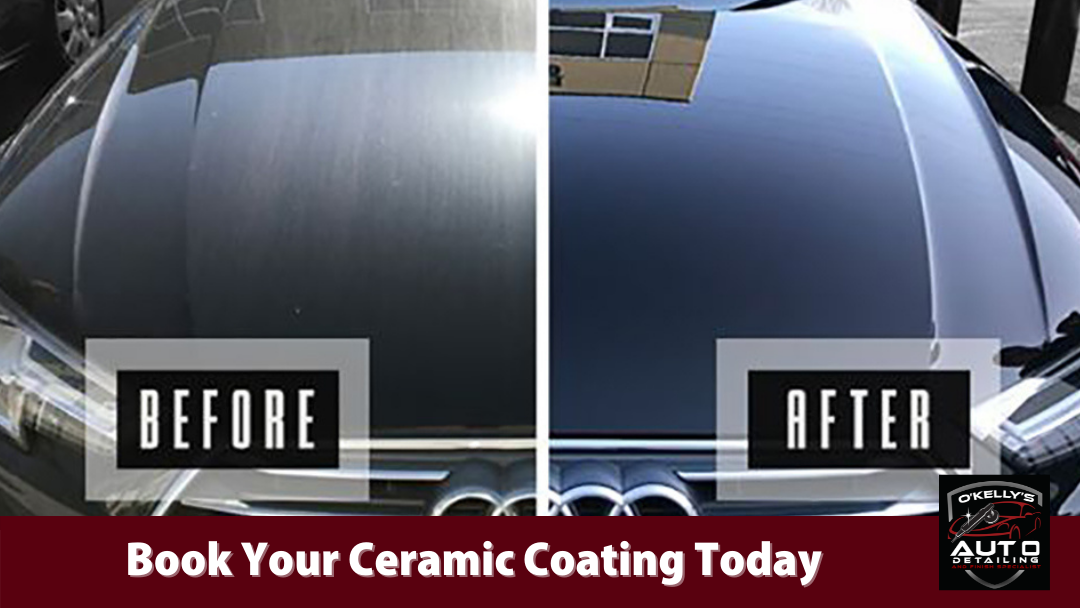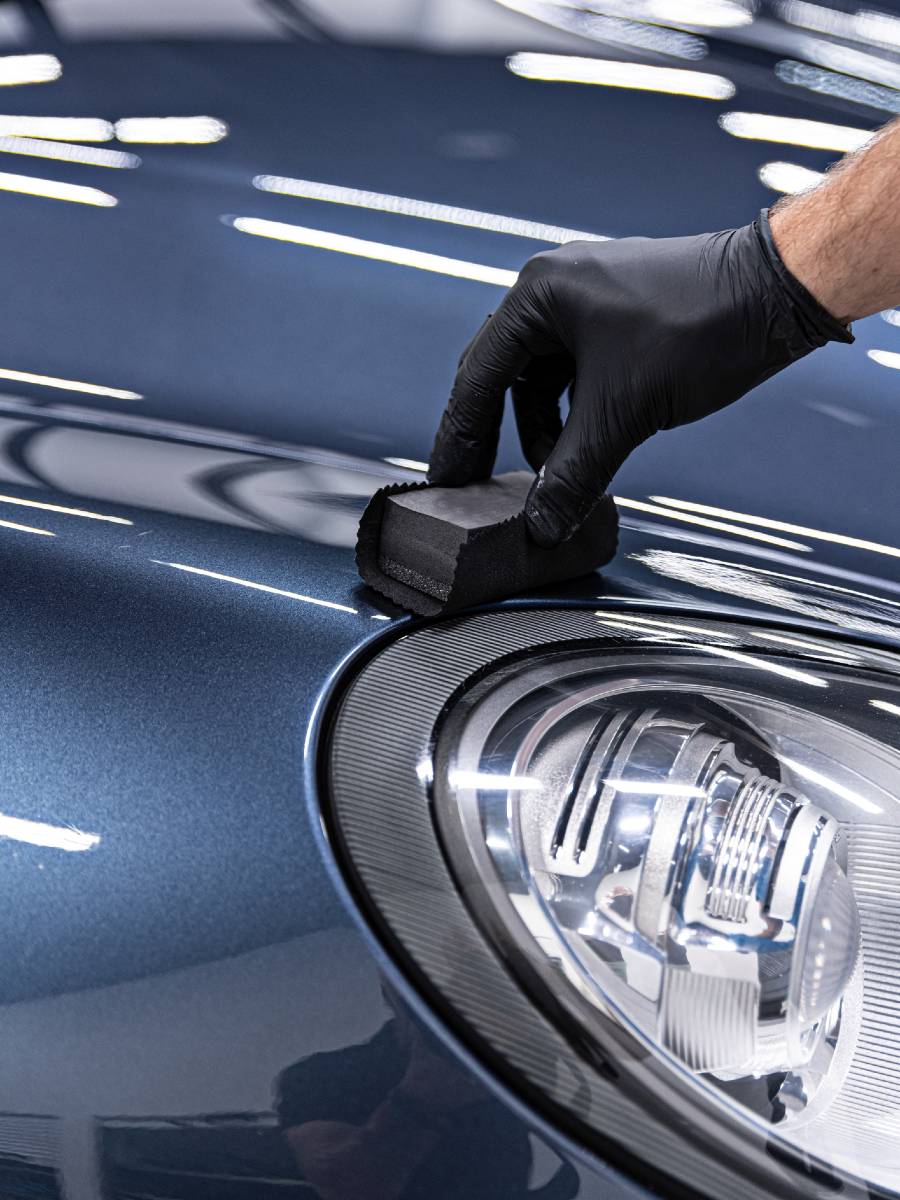Ceramic Layer vs. Standard Wax: Which Gives Much Better Long-Term Defense?
The discussion between ceramic coverings and conventional wax for vehicle defense has garnered substantial focus among vehicle fanatics and experts alike. While both offer the purpose of protecting paint, their distinctions in toughness, application, and long-lasting maintenance prices may affect a consumer's selection. Ceramic layers flaunt remarkable long life and resistance to environmental elements, yet the complexity of their application raises concerns about access and usefulness. As we check out these contrasting options, it becomes necessary to consider not only the prompt advantages yet also the effects for lorry care over time.
Review of Ceramic Layer
Ceramic layer has acquired significant popularity among auto enthusiasts and detailers alike because of its sophisticated safety high qualities. This ingenious technology is created to create a resilient, hydrophobic shield over a lorry's paint surface area, substantially boosting its resistance to environmental pollutants such as dust, UV rays, and chemical discolorations. Unlike traditional wax, which supplies a short-lived layer of security, ceramic coverings bond at a molecular degree with the paint, using durable durability-- typically expanding past two years with correct upkeep.
The application process includes thorough preparation of the lorry's surface area, including cleaning and brightening to make certain optimum adhesion. As soon as used, the covering cures to develop a robust layer that not only adds depth and gloss to the paint but likewise streamlines upkeep. With its hydrophobic buildings, ceramic finishing permits water and dirt to move off even more easily, lowering the frequency of washes and minimizing the risk of swirl marks.
In addition, ceramic coverings are available in various formulations, permitting individuals to pick products tailored to their particular demands and preferences. Generally, ceramic finish represents a substantial improvement in paint security modern technology, supplying superior efficiency compared to traditional choices.
Review of Typical Wax
Generally considered a staple in automotive care, wax works as a preferred selection for those looking for a simple technique to improve and shield their vehicle's paint - ceramic coating. Automotive wax usually comprises all-natural components, such as carnauba, or artificial compounds, created to produce a safety layer externally of the paint. This layer not just enhances the lorry's gloss and radiate but additionally gives a barrier versus environmental contaminants
The application of wax is usually straightforward, making it easily accessible for both professionals and Do it yourself enthusiasts. As soon as applied, wax requires a curing duration, after which it solidifies to develop a protective covering.
However, while wax is reliable for enhancing the aesthetic allure of an automobile, it is vital to note that the defense it supplies may necessitate extra regular reapplication compared to different items, such as ceramic coatings. Overall, conventional wax continues to be a favored alternative for those prioritizing simplicity of use and prompt aesthetic enhancement.
Toughness and Longevity Comparison
While both ceramic layers and conventional wax deal protective benefits for automotive paint, their toughness and longevity vary substantially. Standard wax, normally made from natural carnauba or artificial polymers, generally provides a safety layer that lasts approximately three to 6 months. This fairly brief lifespan necessitates normal reapplication to maintain optimal defense.
In contrast, ceramic finishes are crafted from sophisticated nanotechnology, developing a covalent bond with the paint surface area. This causes a robust, hydrophobic layer that can withstand for two to five years, depending upon the item and ecological conditions. The superior longevity of ceramic layers is connected to their chemical structure, which offers enhanced resistance to scrapes, UV rays, and oxidation.

Defense Versus Ecological Aspects
Protecting a car's paint from ecological elements is essential for preserving its look and value in time. Cars are regularly subjected to a variety of elements, consisting of UV rays, bird droppings, tree sap, acid rainfall, and road gunk, every one of which can compromise the honesty of the paintwork.
Ceramic coatings give a durable protection against these ecological assailants. Unlike typical wax, which can weaken promptly under UV exposure, ceramic finishings create a durable, hydrophobic layer that stands up to the unsafe effects of sunlight and ecological toxins. This sophisticated technology develops a chemical bond with the lorry's surface area, offering exceptional security that lasts for many years, also in harsh problems.
Standard wax, while simpler to use, normally needs constant reapplication and offers minimal resistance to pollutants and UV rays. my website Over time, it can break down, leaving the paint prone to scratches and oxidation. In comparison, ceramic finishes keep their safety qualities longer, substantially reducing the danger of paint damages and making certain that the vehicle retains its aesthetic appeal. Because of this, ceramic coverings are significantly recognized as the superior selection for lasting defense against environmental elements.
Application and Upkeep Distinctions
The approaches of application and succeeding upkeep for ceramic coverings and typical wax differ substantially, impacting the total customer experience and efficiency of each item. Ceramic great site finishings call for an even more detailed application process, usually involving surface area preparation that consists of washing, decontaminating, and polishing the lorry. Once the surface area prepares, the ceramic finishing is used in a controlled environment, frequently requiring professional proficiency to make sure appropriate treating and bonding to the paint.

While both products improve car look, the longer-lasting protection supplied by ceramic finishes might warrant their preliminary financial investment, in spite of the more requiring application process. Conversely, typical wax continues to be a prominent selection for those seeking a less complex, albeit short-term, service.

Final Thought
In conclusion, ceramic coverings demonstrate considerable advantages over typical wax in regards to longevity and environmental management. With a lifespan extending two to 5 years and premium resistance to UV rays, dirt, and chemical stains, ceramic finishes provide Click This Link an extra reliable option for long-term lorry upkeep. Although the application procedure may require expert experience, the resulting price financial savings and reduced regularity of reapplication underscore the worth of ceramic finishes for those seeking ideal car defense.
The dispute between ceramic coverings and traditional wax for automobile protection has amassed significant interest among automobile enthusiasts and experts alike. Unlike standard wax, which supplies a short-term layer of defense, ceramic finishes bond at a molecular level with the paint, providing long-lasting toughness-- frequently extending beyond two years with correct maintenance.
While both ceramic layers and traditional wax offer protective advantages for auto paint, their resilience and longevity differ considerably. For automobile lovers looking for lasting defense, ceramic coatings offer an engaging advantage over typical wax products.
In verdict, ceramic finishings demonstrate substantial advantages over standard wax in terms of durability and environmental security.